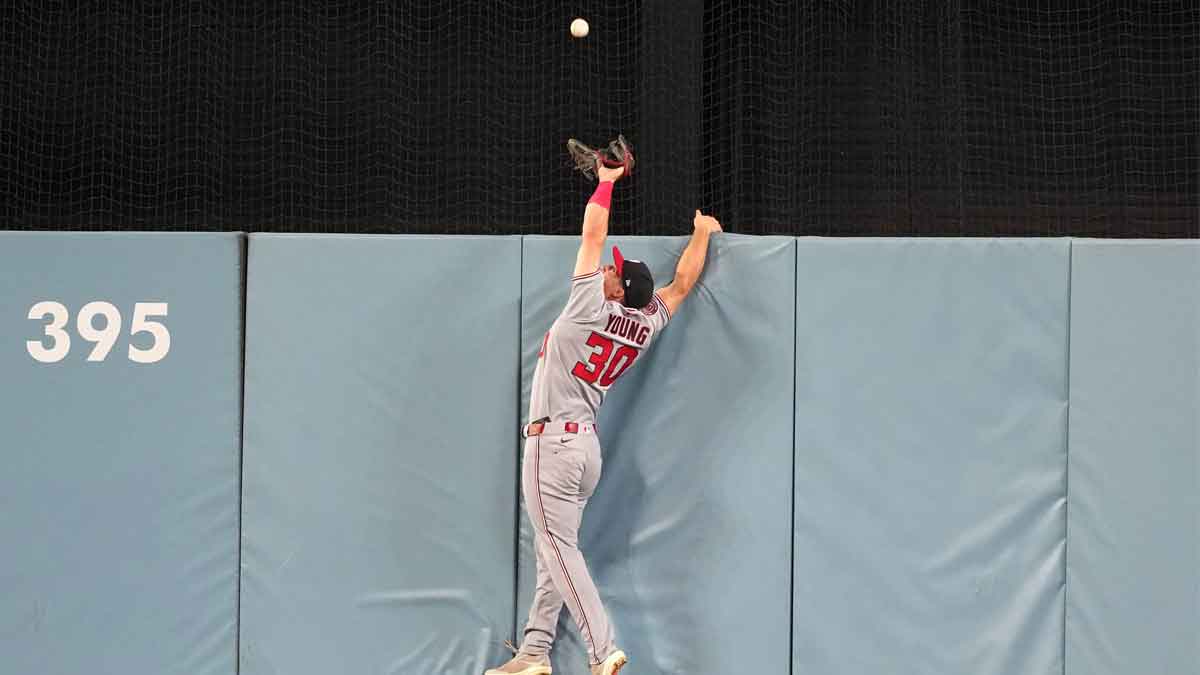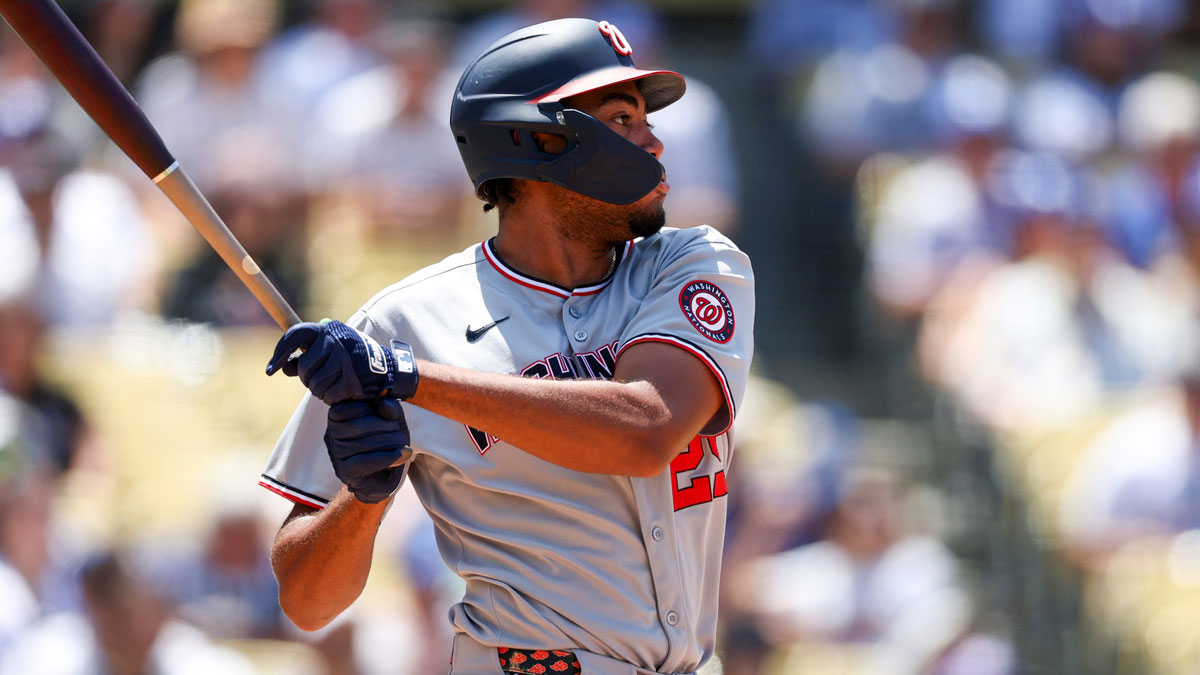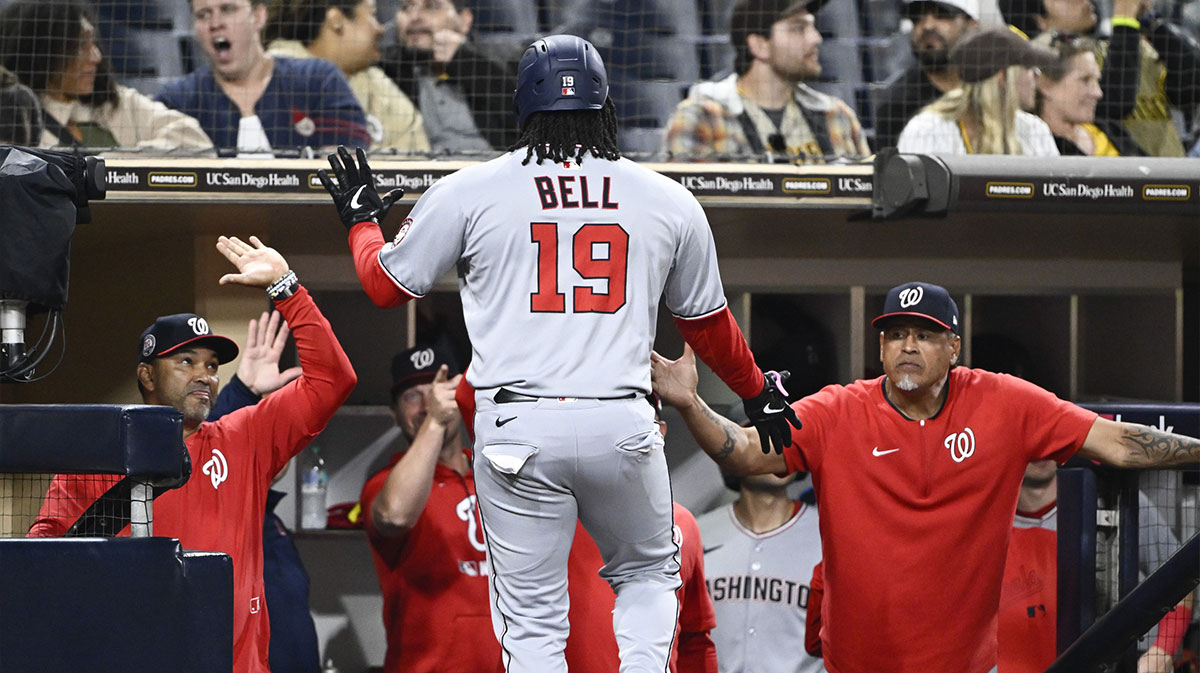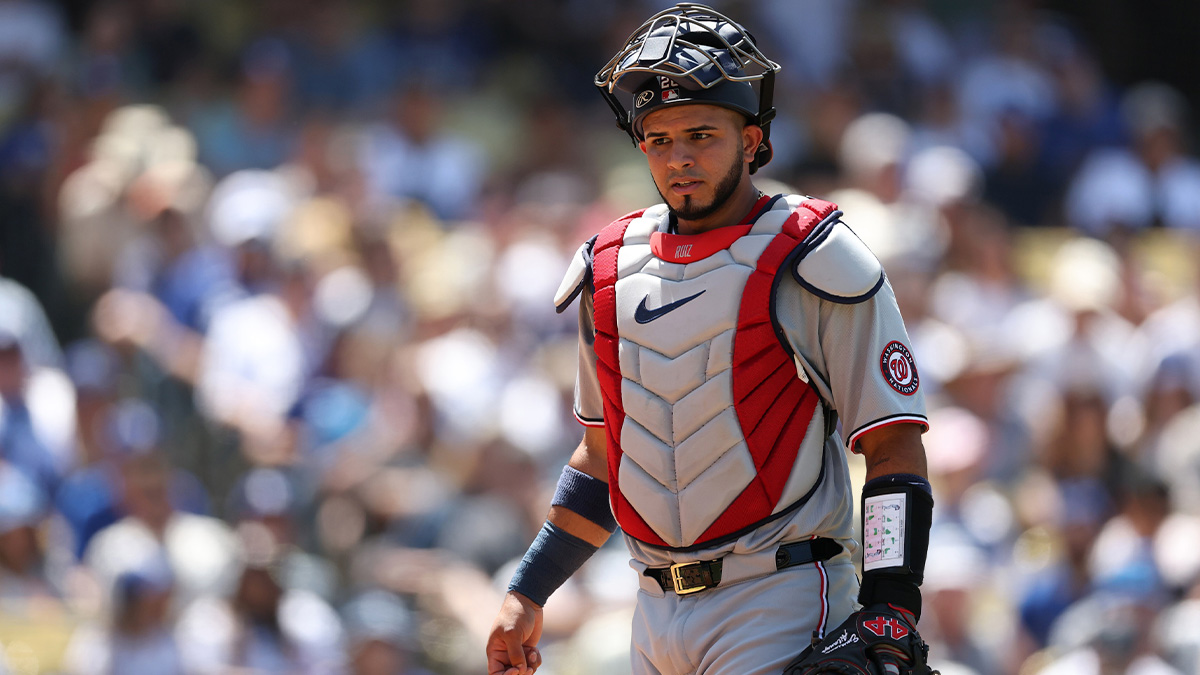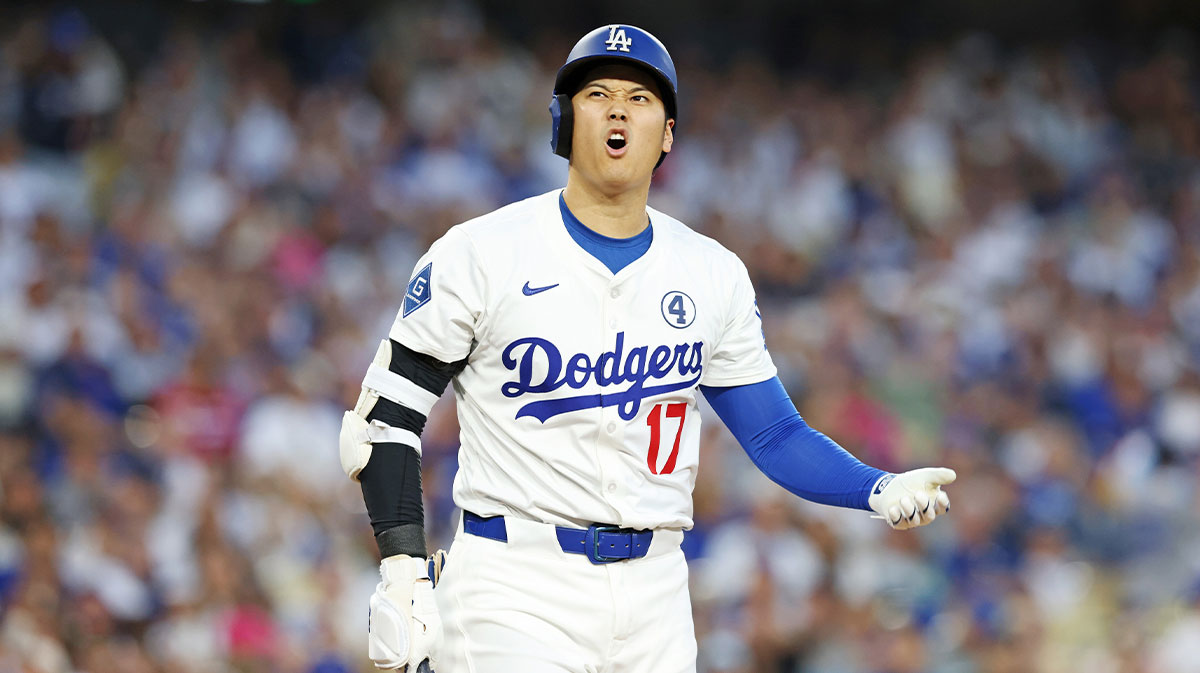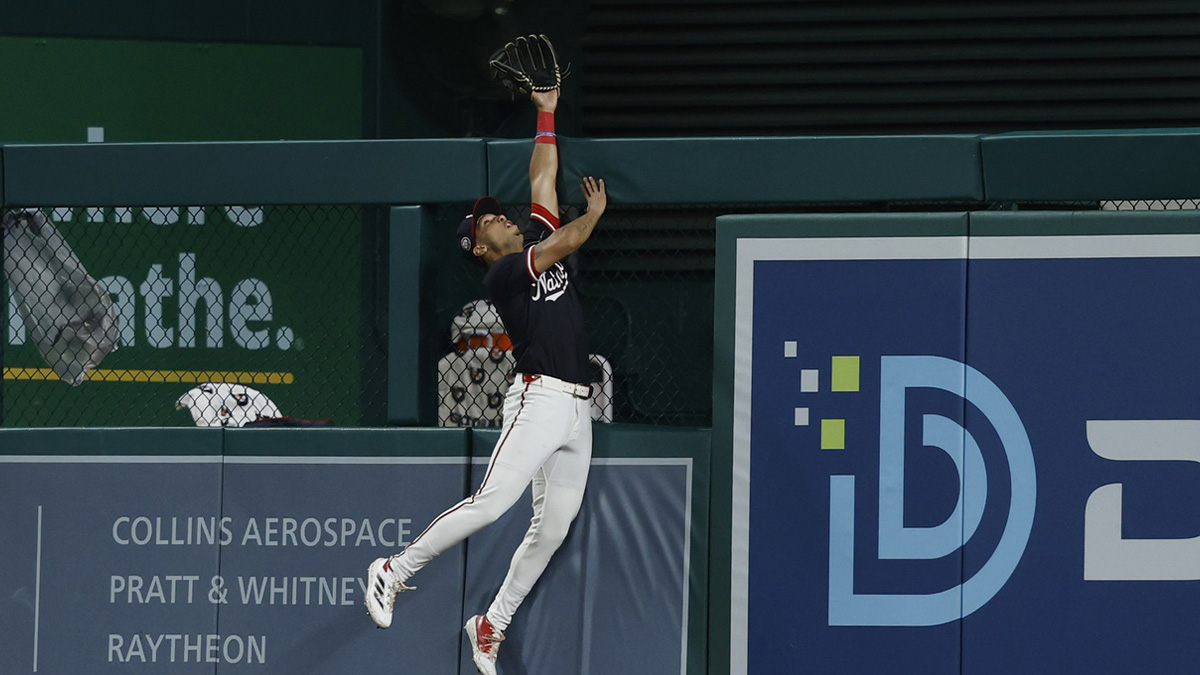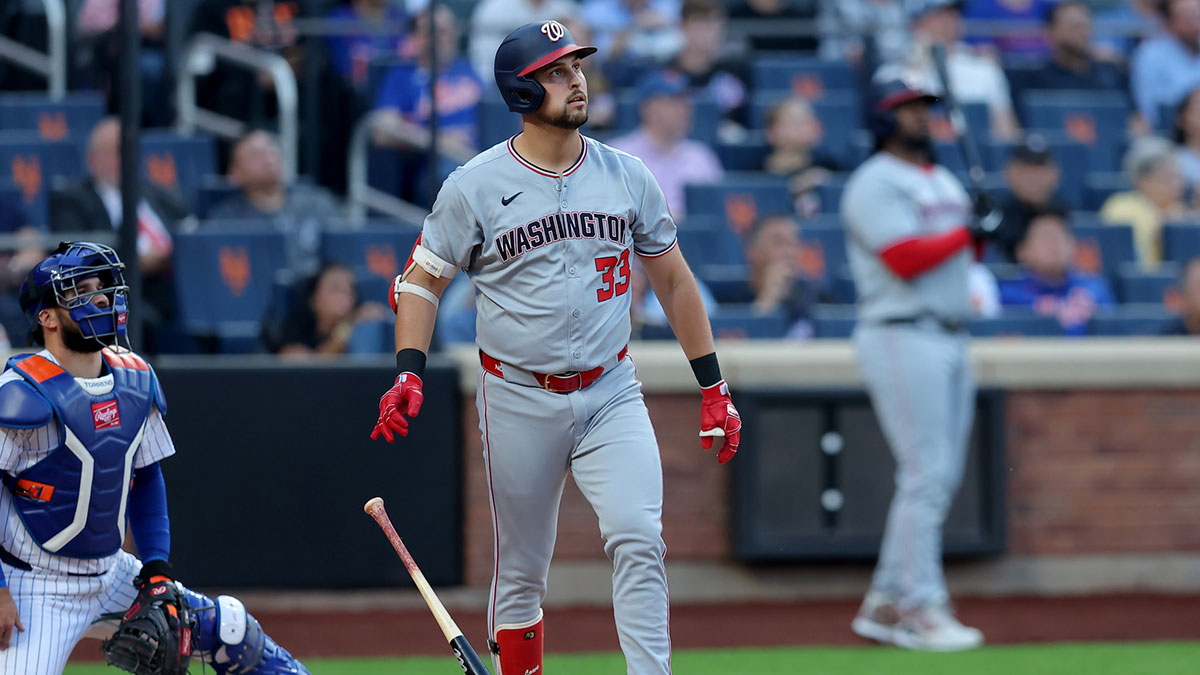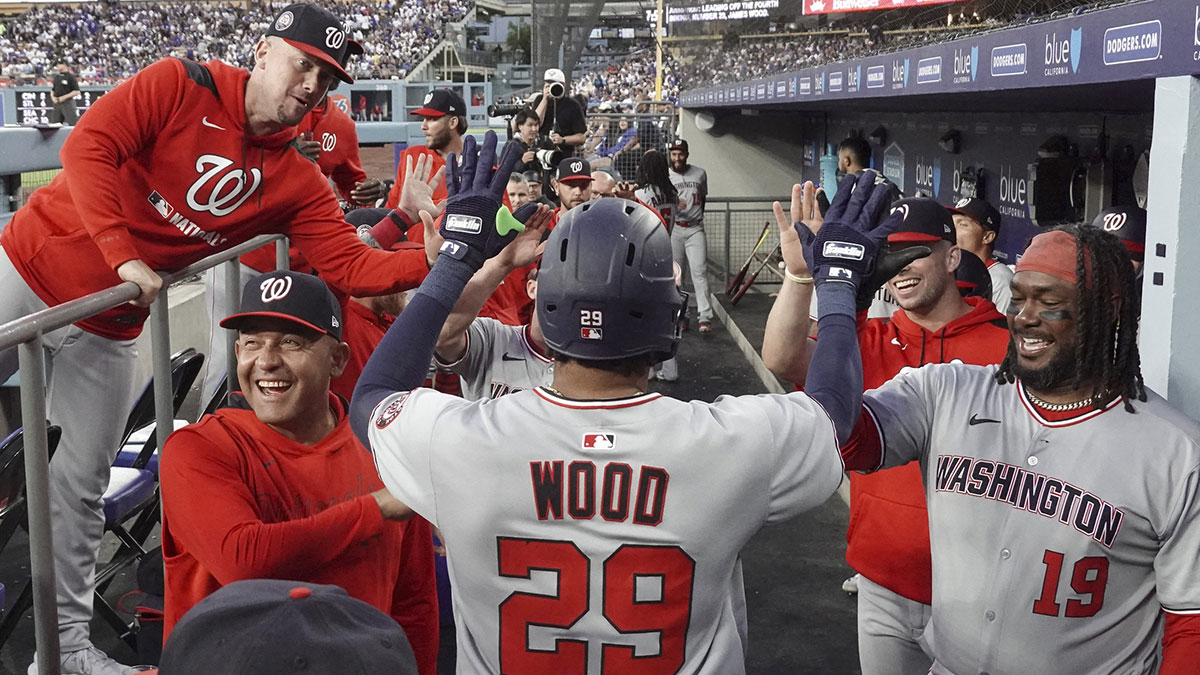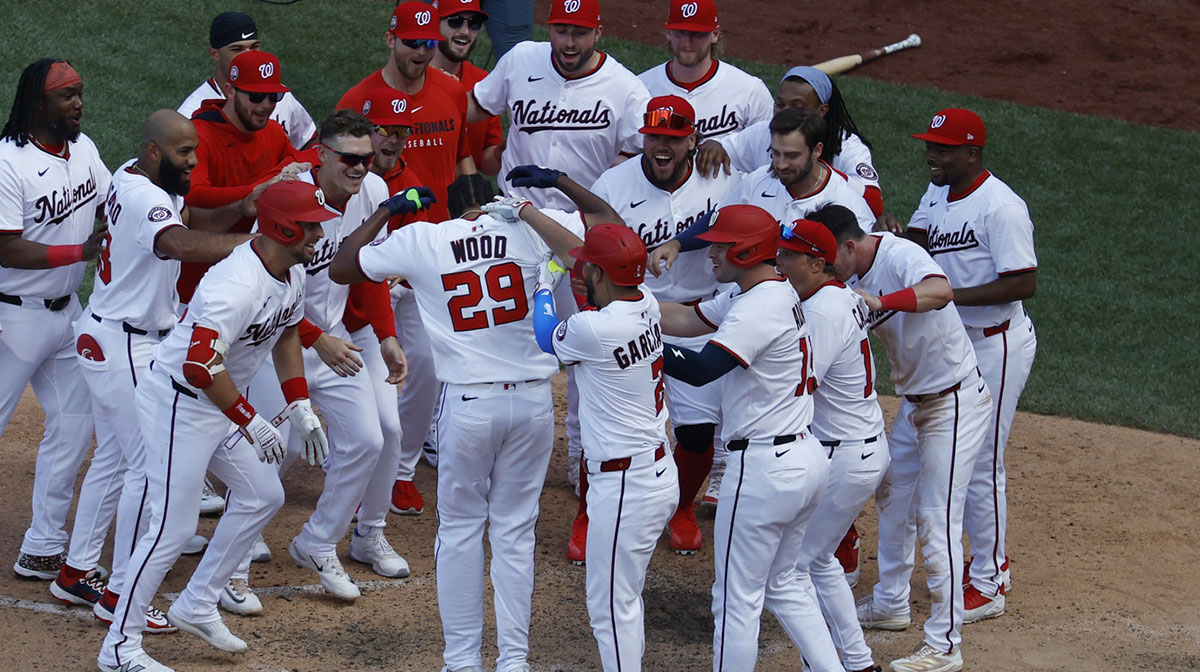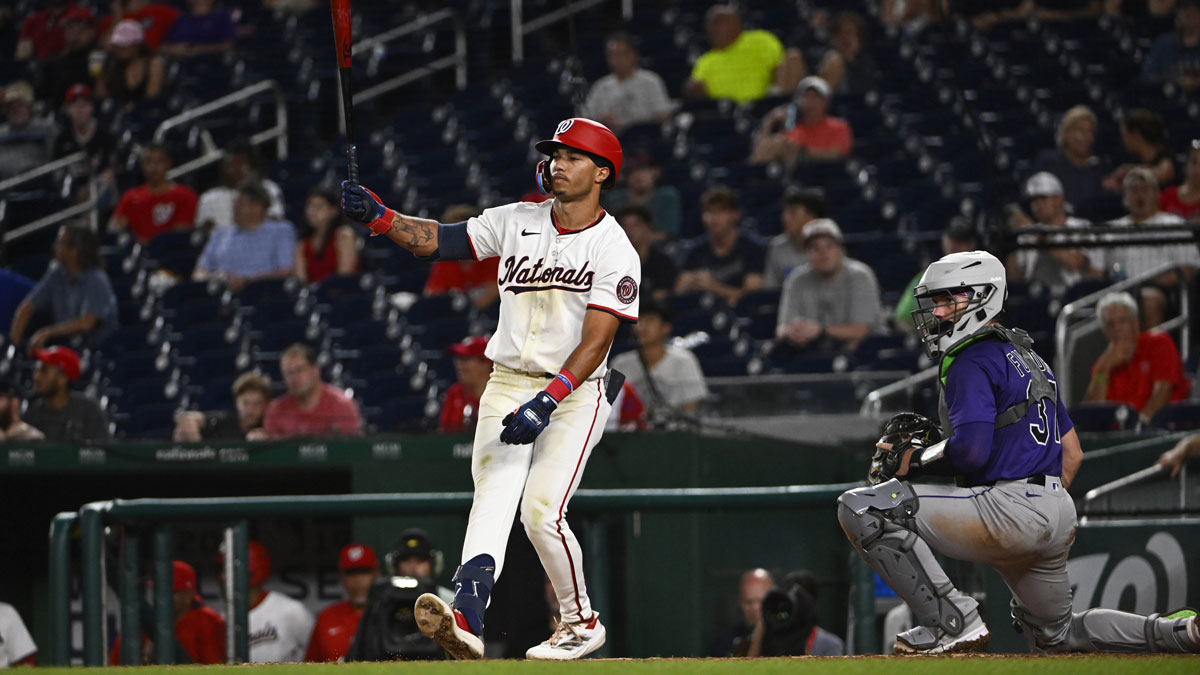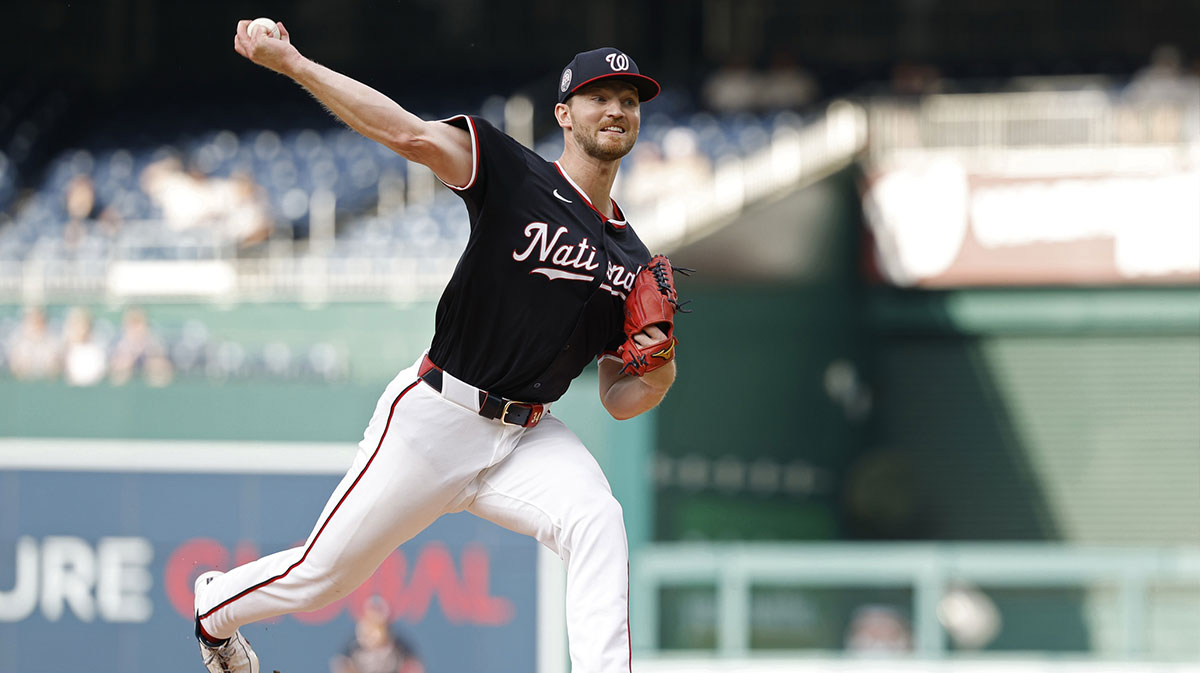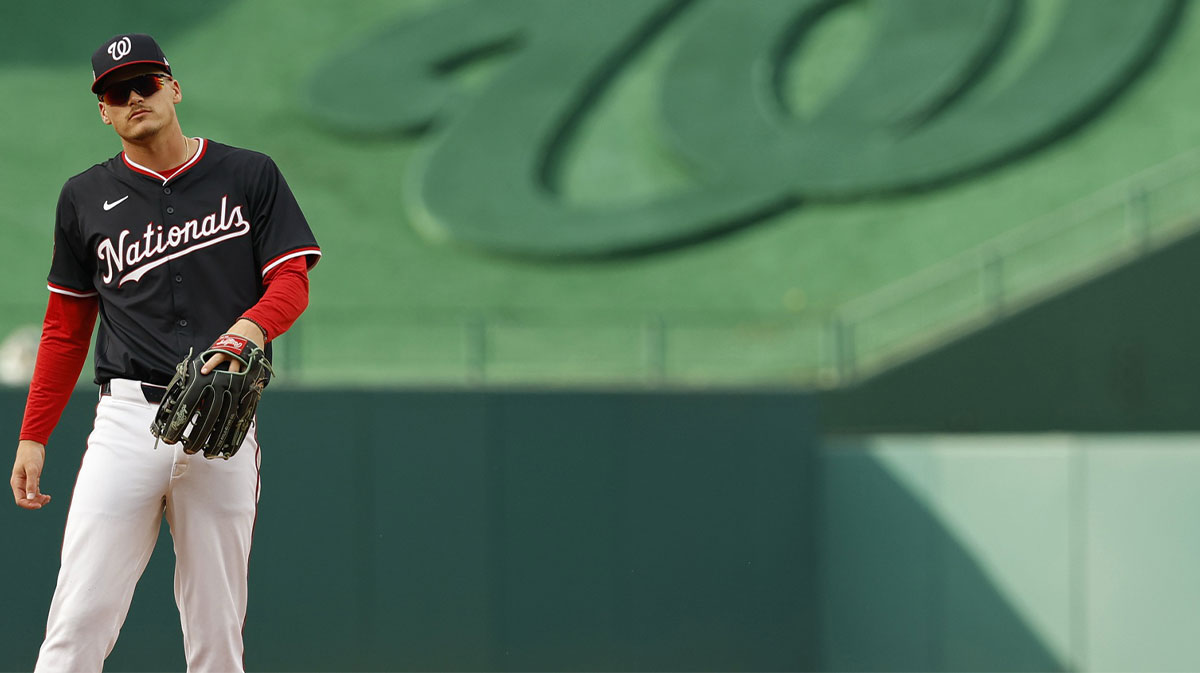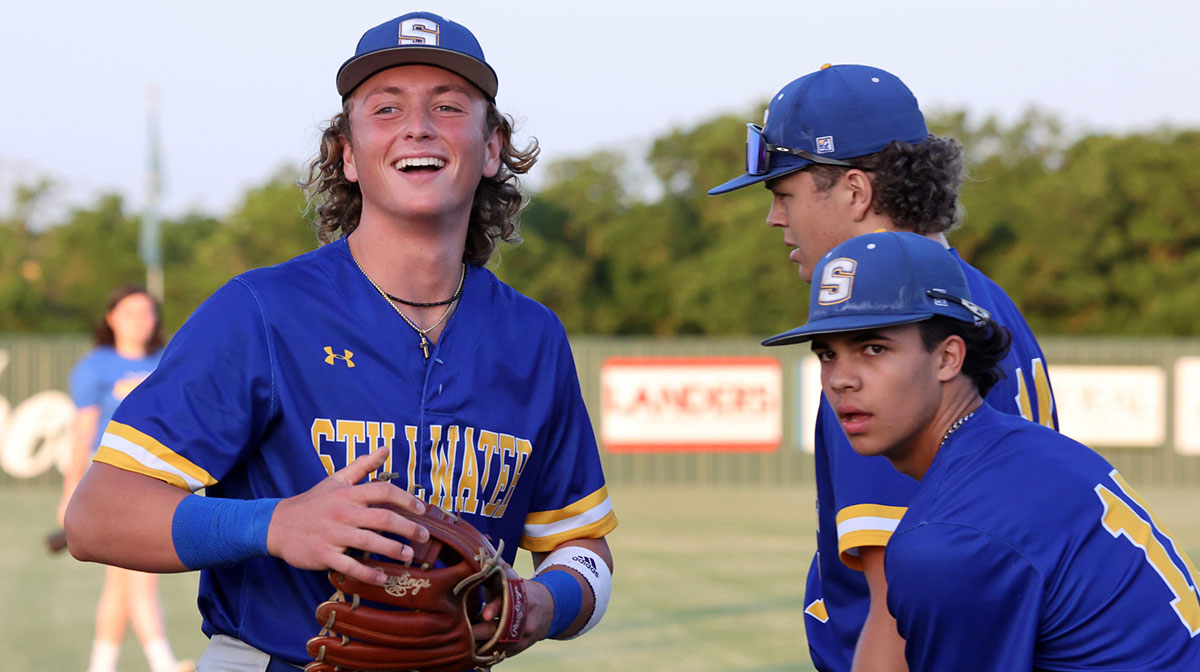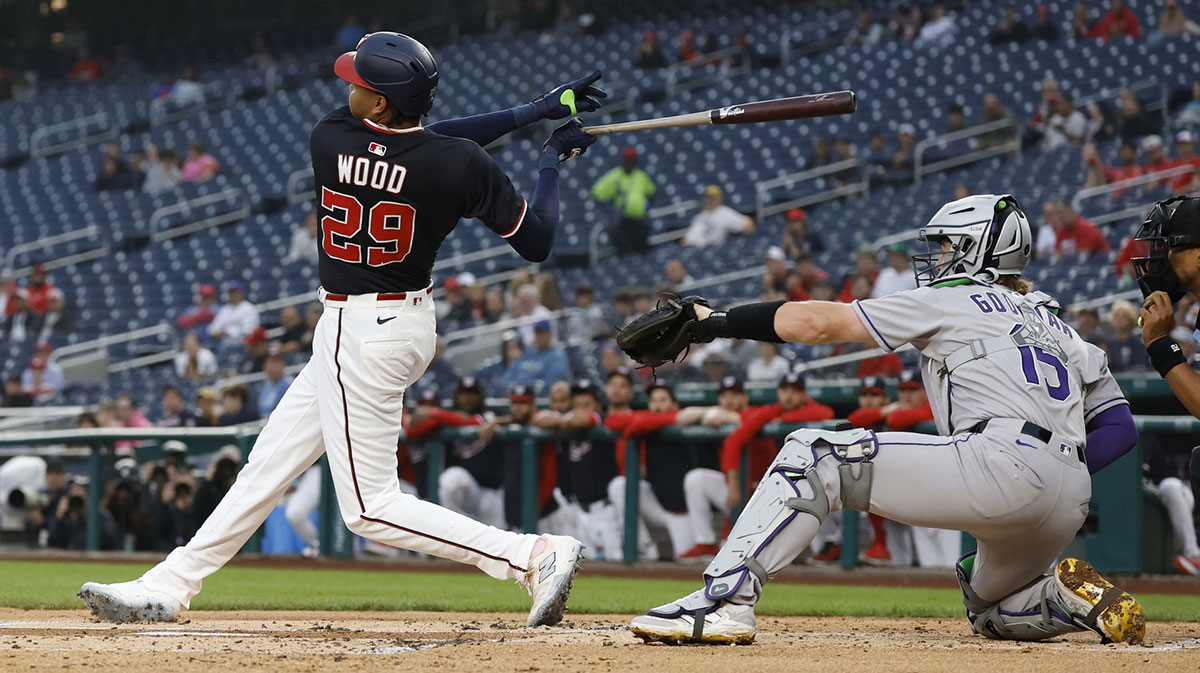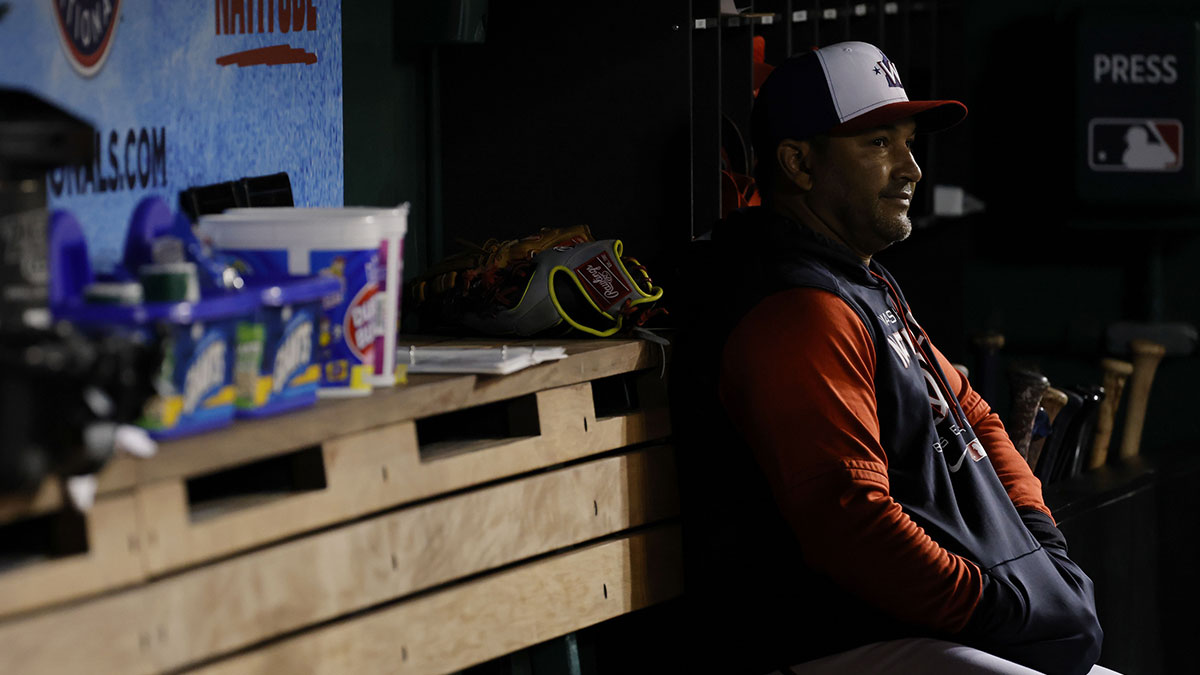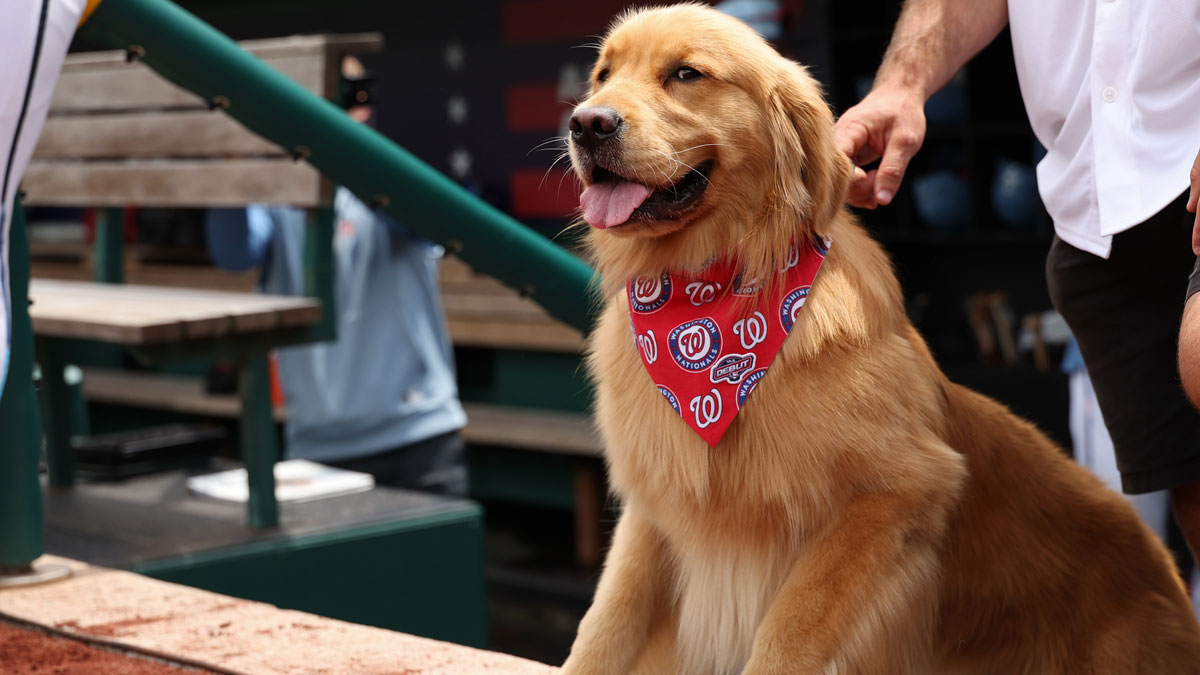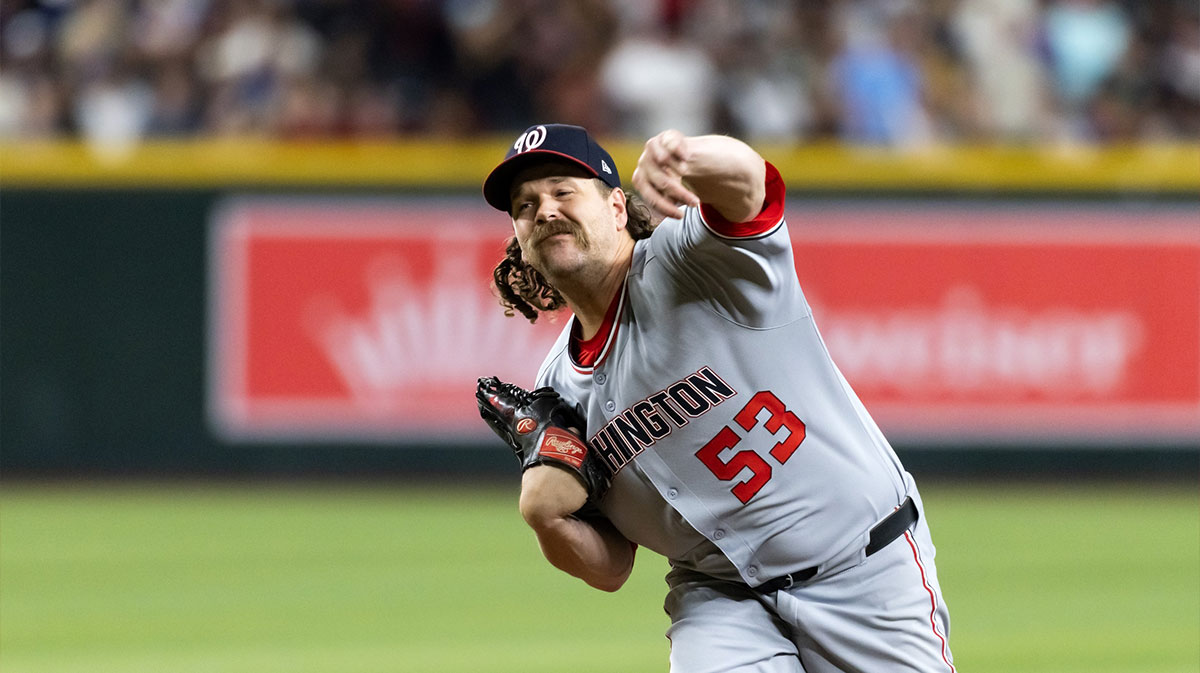This was not supposed to happen for the Washington Nationals.
On May 23, the Nats fell to 19-31 on the season and were 10 games back of the Atlanta Braves in the National League East division. The bullpen was an absolute nightmare, and there were rumors swirling about manager Dave Martinez's status on the hot seat.
However, something miraculous happened. The Nationals became one of the best teams in baseball.
From June until the end of the regular season, Washington had the third-best record in the MLB. In spite of a bullpen that experienced repeatedly melted down and a series of August injuries that beset ace Max Scherzer, the Nats–led by MVP candidate Anthony Rendon–consistently found ways to win games.
On Tuesday night, the Nationals were crowned as National League champions, earning the first World Series berth in franchise history and igniting the nation's capital.
But after such a tumultuous offseason and a wretched first quarter of the season, how did they get here?
Face of the franchise waves goodbye
Nationals fans had been dreading Sept. 26, 2018 for quite some time.
After the team had officially been eliminated from playoff contention, that day marked possibly the final time that Bryce Harper would take the field as a member of the Nationals.
Harper became the face of the franchise almost on Day One. Washington selected the Las Vegas, Nevada, native with the first overall pick of the 2010 June Amateur Draft after Harper had risen through the ranks as one of the most promising prospects in baseball. He would make his MLB debut as a teenager in 2012, and would go on to win the NL Rookie of the Year Award.
From there, the love affair between Harper and the fans of D.C. began in earnest. Posters with his visage encircled Nationals Park, and he was revered for his gritty nature and fiery competitiveness.
Harper had one of the most dominant seasons ever en route to winning the NL MVP Award in 2015, and he would be named to the All-Star team in each of the three subsequent seasons as well.
However, Harper's future in D.C. was clouded by the notion that he would receive a record contract in free agency following the 2018 season. His place with the team seemed that much more unlikely after the Nationals failed to make the playoffs.
Harper was not long for Washington. The Nationals made one offer at the conclusion of the regular season, but the two sides would not engage again.
Instead, the face of the Nationals franchise signed a lucrative contract with the rival Phillies.
Plugging holes
Nationals general manager Mike Rizzo made a business decision. He understood that Harper would receive a massive contract, but he was not willing to engage in a back-and-forth when his team had other needs.
Rather than focus his attention on re-signing Harper, Rizzo got to work immediately.
He signed free agent catcher Kurt Suzuki to give the Nationals an offensive-minded backstop, then acquired former Cleveland Indians catcher Yan Gomes to bolster the catching depth and give the team a more reliable defender. Rizzo also signed relievers Kyle Barraclough (who had come to the team at the 2018 trade deadline) and Trevor Rosenthal.
Shortly thereafter, Rizzo nabbed the big fish.
Seeing as the Nationals understood that they would not sign Harper, they chased the best free agent starting pitcher on the market: Arizona Diamondbacks left-hander Patrick Corbin.
Corbin finished fifth in the NL Cy Young Award voting in 2018 after going 11-7 with a 3.15 ERA and an 11.1 K/9. His peripherals were excellent as well, as Corbin posted a 2.47 FIP and rarely gave up homers. Most importantly, he would only just be turning 30 in July.
The Nationals signed Corbin on Dec. 7, immediately giving them one of the most dangerous three-headed monsters (Max Scherzer, Stephen Strasburg and Corbin) of any team in baseball.
Less than three weeks later, Rizzo would sign veteran right-hander Anibal Sanchez to replace Tanner Roark (who had been traded to Cincinnati for reliever Tanner Rainey) in the rotation. Washington finished the offseason by signing second baseman Brian Dozier and right-hander Jeremy Hellickson.
Inauspicious start
Even though the Nationals had lost Harper, they were still considered a favorite to win the NL East.
Washington had made significant upgrades in the rotation, and they combatted being one of the worst teams at catcher and second base in 2018 by bringing in a number of experienced players.
However, things did not go as planned for the Nationals.
Shortstop Trea Turner suffered a broken hand in just the third game of the season, and he would miss over a month in the process. Juan Soto and Anthony Rendon also missed time. Meanwhile, both Barraclough and Rosenthal were struggling immensely in high-leverage situations at the back end of the bullpen.
Nationals starters led the MLB in fWAR for the first two months, but the team struggled without Turner at the leadoff spot, and the relievers had the worst combined ERA in baseball (6.75).
The sputtering start resulted in questions about Martinez's job security. After all, Martinez had led Washington to a disappointing 82-80 season in his first year in 2018. Maybe he simply was not cut out to be a big-league manager.
While the public showed a level of urgency, however, the Nationals were confident internally.
“Stay in the fight”
Baseball fans were not privy to all of the intricacies of this Nationals clubhouse.
Martinez had been dealing with heart complications that would later lead to a procedure in September. He would not give up on his club, encouraging them instead to “stay in the fight.” The slogan became a rallying cry for the Nationals at the start of the summer, and they never looked back.
Washington went 74-38 from May 23 until the end of the regular season. Rizzo added bullpen pieces like Roenis Elias, Hunter Strickland and Daniel Hudson to provide for more depth, and the top three in the Nationals rotation continued to dominate.
Scherzer made just four combined starts in July and August, but the offense picked up the slack. Rendon hit .333 in July before posting an absurd .394/.450/.712 slash in August. Meanwhile, Turner's return had galvanized the lineup, and Soto offered perfect protection for Rendon.
The Nationals would not have enough juice to catch the Braves in the NL East, but they handily earned the top Wild Card spot. Washington ranked second in the NL in both runs scored and OPS, while the rotation finished first in fWAR and second in ERA.
Harassing Hader
The Nationals had plenty of momentum entering the NL Wild Card Game, but so did the Milwaukee Brewers. Craig Counsell's club went 20-7 in September to earn the second Wild Card spot. Despite losing MVP candidate Christian Yelich to a broken kneecap on Sept. 11, the Brewers went 13-5 down the stretch.
Having made a stunning run to the postseason, the Brewers were determined to prove that they belonged. Milwaukee scored two runs off of Max Scherzer in the first inning when Yasmani Grandal followed a Trent Grishma walk with a home run. One inning later, the Brewers made it 3-0 on a solo shot by Eric Thames.
While the Brewers got off to a fast start, Washington's offense struggled. Turner homered in the third inning, but they stranded runners early. Even though Strasburg entered the game and was practically flawless in three innings of relief, the Nats were helpless against Brewers lefty Drew Pomeranz. To make matters worse, the Nationals would have to mount a comeback against dominant reliever Josh Hader.
However, Washington did not go meekly into the offseason.
Hader sandwiched a pair of strikeouts by hitting Michael A. Taylor with a pitch. Martinez then called on Nats lifer Ryan Zimmerman to pinch-hit for Adam Eaton. Zimmerman did everything he could to stay alive, fisting an inside fastball into center field for a bloop single.
Following another battle, Anthony Rendon earned a walk, bringing the 20-year-old Soto to the plate. Soto delivered in the biggest at-bat of the night, lining a single to right field that would score all three runs and give the Nationals the lead.
Hudson closed the show in the ninth inning, setting up a rematch with the Los Angeles Dodgers in the NLDS.
Sweet revenge in L.A.
The Nationals have a history of heartbreak facing the Dodgers. Washington took a 2-1 lead in the 2016 NLDS, but they lost each of the next two games by one run as Los Angeles advanced to the NLCS. Just three years later the stage was set for another epic five-game series.
The Dodgers took the opener after Walker Buehler outdueled Corbin, but the Nationals won Game 2 behind a brilliant performance from Stephen Strasburg. A surprise relief appearance by Corbin backfired on Washington when the Dodgers erupted for seven runs in the sixth inning. But Scherzer and Zimmerman kept the Nats alive in Game 4, setting up a do-or-die contest in Los Angeles.
It seemed that Nationals fans would endure more heartbreak. Max Muncy hit a two-run homer off of Strasburg in the first inning, and Enrique Hernandez followed with a solo shot in the second.
Soto would get the Nationals on the board with an RBI single in the sixth, but the Nationals stranded a runner in scoring position when Clayton Kershaw struck out Eaton to end the seventh. They were running out of chances, and Strasburg was out of the game. The bullpen would have to keep things tight.
Rainey and Corbin combined to pitch a scoreless eighth inning, and then the fireworks really began.
Rendon and Soto had carried the Nationals for the entirety of the series, and they seemed to be the only guys having quality at-bats in Game 5. Sure enough, Washington's boppers clubbed back-to-back homers off of Kershaw to tie the game.
Corbin and Hudson persevered through some tense moments to keep the game tied heading into extra innings. Eaton led off the 10th with a walk before Rendon doubled. After Soto was intentionally walked, 36-year-old Howie Kendrick clubbed a grand slam to send the Nationals to the NLCS.
The Fall Classic beckons
The Nationals and Cardinals were supposed to provide an entertaining series between two National League upstarts that had overcome a number of odds to have a shot at reaching the World Series. Instead, the series was merely a formality.
Anibal Sanchez tossed seven no-hit innings as the Nationals cruised in Game 1, then Scherzer followed with six no-hit innings of his own as the Nats took both games in St. Louis.
Back at home, Strasburg struck out 12 in seven innings while Kendrick tallied three hits and three RBIs to give Washington a stranglehold on the series. In Game 4, the Nationals sent a clear message by scoring seven runs in the first inning to cap off the sweep.
The question now becomes: can the Nationals really win the World Series?
This is a team that is still rife with a lack of bullpen depth. At the same time, the starters are red-hot and the rest of the lineup is starting to hit around Rendon and Soto.
Regardless of whether the Yankees or Astros advance to the World Series, the Nationals will have their hands full. But they have already overcome longer odds over the course of this season.
“Stay in the fight” has never rung more true.

